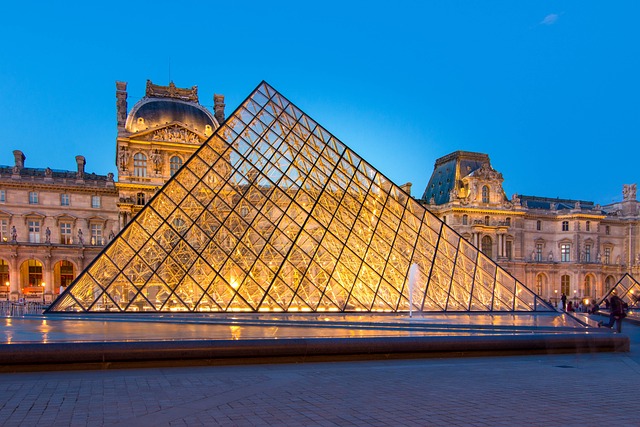Exterior metal panels are a transformative element in modern and traditional architectural design, offering a durable, versatile, and visually appealing finish for building facades. These panels, available in materials like aluminum or steel with anodized or coated finishes, enhance both the aesthetic appeal and longevity of buildings while providing customizable profiles and shapes to fit various architectural styles. Advancements in technology have made these panels integral to sustainable design, improving energy efficiency through insulation and reducing carbon footprints. Their precision fabrication ensures a seamless appearance, and the inclusion of advanced materials and manufacturing techniques has positioned them as high-performance solutions that cater to both functional and aesthetic requirements. The skilled craftsmanship in their installation is crucial for achieving facades that exemplify innovation and design excellence. In contemporary architecture, these panels are not just functional but also serve as a canvas for architectural expression, as seen in iconic buildings like the Guggenheim Museum Bilbao and the Brooklyn Academy of Music's Harvey Lichtenstein Theater, which showcase their enduring relevance and ability to transform structures into symbols of modern creativity. The integration of smart technology within these facades further propels the field forward, enabling real-time monitoring and energy optimization systems that align with sustainable practices and contribute to future-proof buildings.
Exploring the intricate world of exterior metal panels, this article delves into the pivotal role they play in modern facade design. It illuminates the significance of material selection for both durability and aesthetic appeal, and showcases cutting-edge fabrication techniques that enhance facade performance. Through a series of case studies highlighting innovative applications, readers will uncover how these metal panels are transforming contemporary architecture, ensuring a compelling read for architects, designers, and construction professionals alike.
- Understanding Exterior Metal Panels in Facade Design
- Material Considerations for Durability and Aesthetics in Exterior Metal Panels
- Advanced Techniques in Metal Fabrication for Optimal Facade Performance
- Case Studies: Innovative Exterior Metal Panel Applications in Modern Architecture
Understanding Exterior Metal Panels in Facade Design
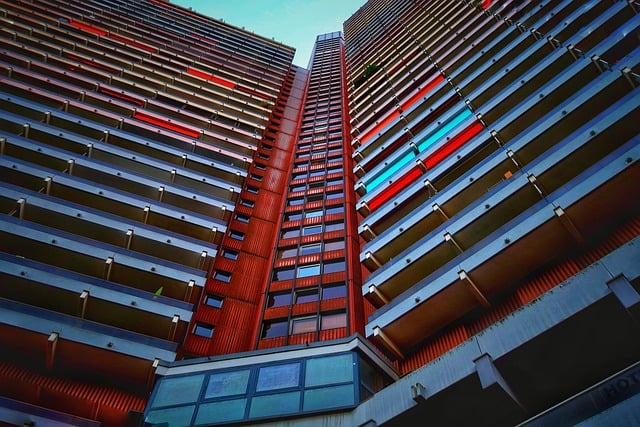
Incorporating expertly fabricated exterior metal panels into facade design offers a multitude of benefits for both contemporary and traditional architectural projects. These panels are not merely functional components but serve as the canvas upon which modern building aesthetics are painted, providing a sophisticated and durable finish that can withstand the elements while enhancing visual appeal. The selection of materials, such as aluminum or steel, and their finishes, including anodized or coated options, plays a pivotal role in determining the longevity and maintenance requirements of a facade. Architects and designers value the versatility of these panels, which can be crafted into various profiles and shapes to complement diverse architectural styles, from sleek, minimalist designs to intricate, ornate patterns that add character and depth to any structure.
The integration of exterior metal panels in facade design is a testament to the evolution of building envelope technology, where custom fabrication allows for precise fit and finish, ensuring a seamless and cohesive look. These panels can be engineered to incorporate insulation properties, thereby improving a building’s energy efficiency and reducing its carbon footprint. Furthermore, with advancements in materials science and manufacturing techniques, exterior metal panels have become an integral component in sustainable design practices, offering a high-performance solution that meets both aesthetic and functional needs. The expert craftsmanship required for their installation underscores the importance of collaborating with experienced fabricators who understand the complexities of facade engineering, ensuring that every building facade is not just a barrier between indoors and out, but a statement of innovation and design excellence.
Material Considerations for Durability and Aesthetics in Exterior Metal Panels
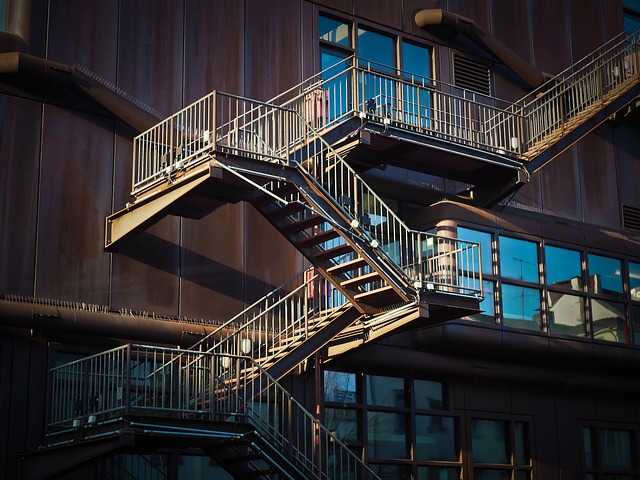
In the realm of architectural design, the choice of material for exterior metal panels plays a pivotal role in both the durability and aesthetic appeal of a building’s facade. For long-term resilience against the elements, materials such as stainless steel and aluminum are often favored due to their corrosion resistance and longevity. These metals can withstand harsh weather conditions, ensuring that the structure maintains its integrity over time. Moreover, the selection of finish types, including anodized coatings or powder-coated surfaces, not only protects the metal from environmental degradation but also offers a wide array of colors and textures to complement any architectural style. The finish acts as a shield against UV rays and wear, preserving the vibrancy and luster of the panels while enhancing the visual impact of the building’s exterior.
The allure of a building is often determined by the harmony between its function and form, which is achieved through meticulous material selection for its facade. Architects and fabricators must consider factors such as light reflection, thermal performance, and maintenance requirements to create a facade that not only captivates visually but also performs optimally in its environment. For instance, copper alloys can develop a patina over time, which provides both a distinctive look and natural weathering protection. Each material’s unique properties contribute to the overall design language of the building, ensuring that the facade is not only enduring but also a true reflection of the architect’s vision for the structure’s character.
Advanced Techniques in Metal Fabrication for Optimal Facade Performance
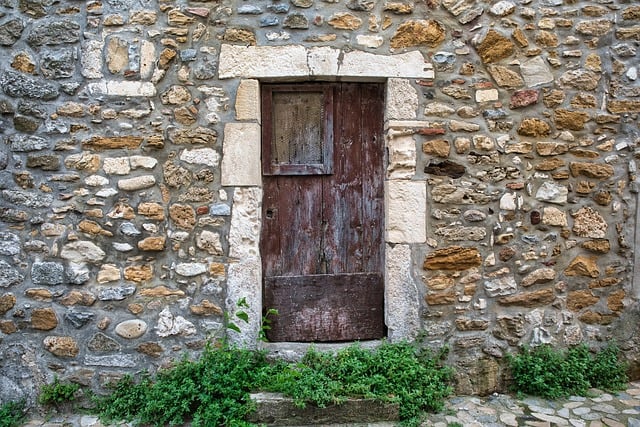
In the realm of architectural design, the integration of advanced techniques in metal fabrication plays a pivotal role in optimizing facade performance. These cutting-edge methods not only enhance the aesthetic appeal but also ensure durability and functionality under varying environmental conditions. For instance, the utilization of precision laser cutting and CNC machining allows for intricate designs to be executed with consistent accuracy, which is essential for the seamless integration of these panels into a building’s exterior. Moreover, the application of sophisticated thermal breaking systems in aluminum composite panels (ACPs) not only improves insulation properties but also contributes to energy efficiency, a critical aspect for sustainable building practices. The judicious selection of materials and finishes, such as anodized or coated metals, further protects against corrosion and weathering, ensuring that the facade maintains its integrity and luster over time.
The integration of smart technology within metal panels is another leap forward in the evolution of facades. Sensors and intelligent systems embedded within these panels can collect data on building performance and environmental conditions, facilitating real-time monitoring and adaptive control for optimal energy use. This advancement not only contributes to the efficiency and longevity of buildings but also opens up possibilities for interactive and responsive architectural envelopes that can evolve with the needs of their users and the demands of contemporary design. The synergy between innovative fabrication techniques and smart technology represents a significant step forward in elevating facade performance to new heights, ensuring that buildings are not only visually striking but also highly functional and adaptable to future requirements.
Case Studies: Innovative Exterior Metal Panel Applications in Modern Architecture
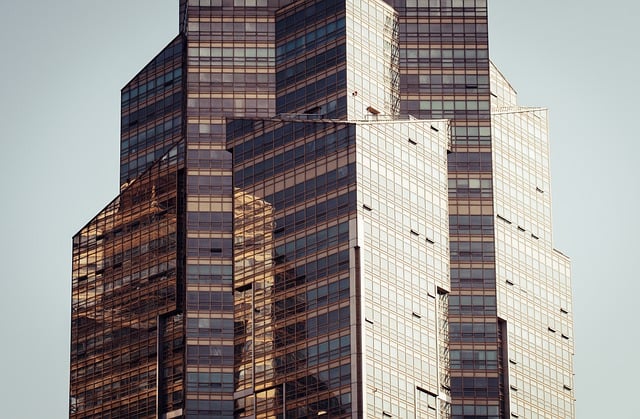
In contemporary architectural design, exterior metal panels have become a cornerstone in creating visually striking and durable facades. A notable case study is the sleek, titanium-clad Guggenheim Museum Bilbao in Spain, where the use of metal panels by architect Frank Gehry transformed a derelict industrial area into a cultural beacon. The reflective surface of the titanium panels interacts with light, offering a kaleidoscope of reflections that has captivated visitors since its opening in 1997. Similarly, the Brooklyn Academy of Music’s Harvey Lichtenstein Theater in New York underwent a significant renovation where pre-weathered steel panels were employed to blend functionality with aesthetic appeal. The metal facade not only enhances the building’s presence but also provides resilience against the harsh urban environment, showcasing the longevity and adaptability of exterior metal panels in modern architecture.
Advancements in material science and fabrication techniques have led to a variety of innovative applications for exterior metal panels. For instance, the Fondazione Prada in Milan utilizes anodized aluminum with a unique, perforated pattern, creating a subtle yet striking visual effect that interplays with its surroundings. This project demonstrates the potential for metal panels to serve as both functional building elements and art pieces, contributing to the overall narrative of modern architecture and urban spaces. The versatility of these panels allows architects to push the boundaries of design, ensuring that each facade becomes a testament to creativity and engineering prowess.
In conclusion, the strategic application of expertly fabricated exterior metal panels plays a pivotal role in modern facade design. The choice of materials, coupled with advanced fabrication techniques, not only enhances the aesthetic appeal but also ensures durability and optimal performance of building exteriors. Through detailed case studies, it is evident that these innovative applications are reshaping the landscape of architecture, setting a new standard for sustainability, efficiency, and design excellence. Architects and builders alike must consider the synergy between form and function when incorporating such panels into their projects to achieve both visual impact and long-term viability. The future of facade design lies in the seamless integration of these sophisticated materials and processes, offering a fresh perspective on the built environment.
